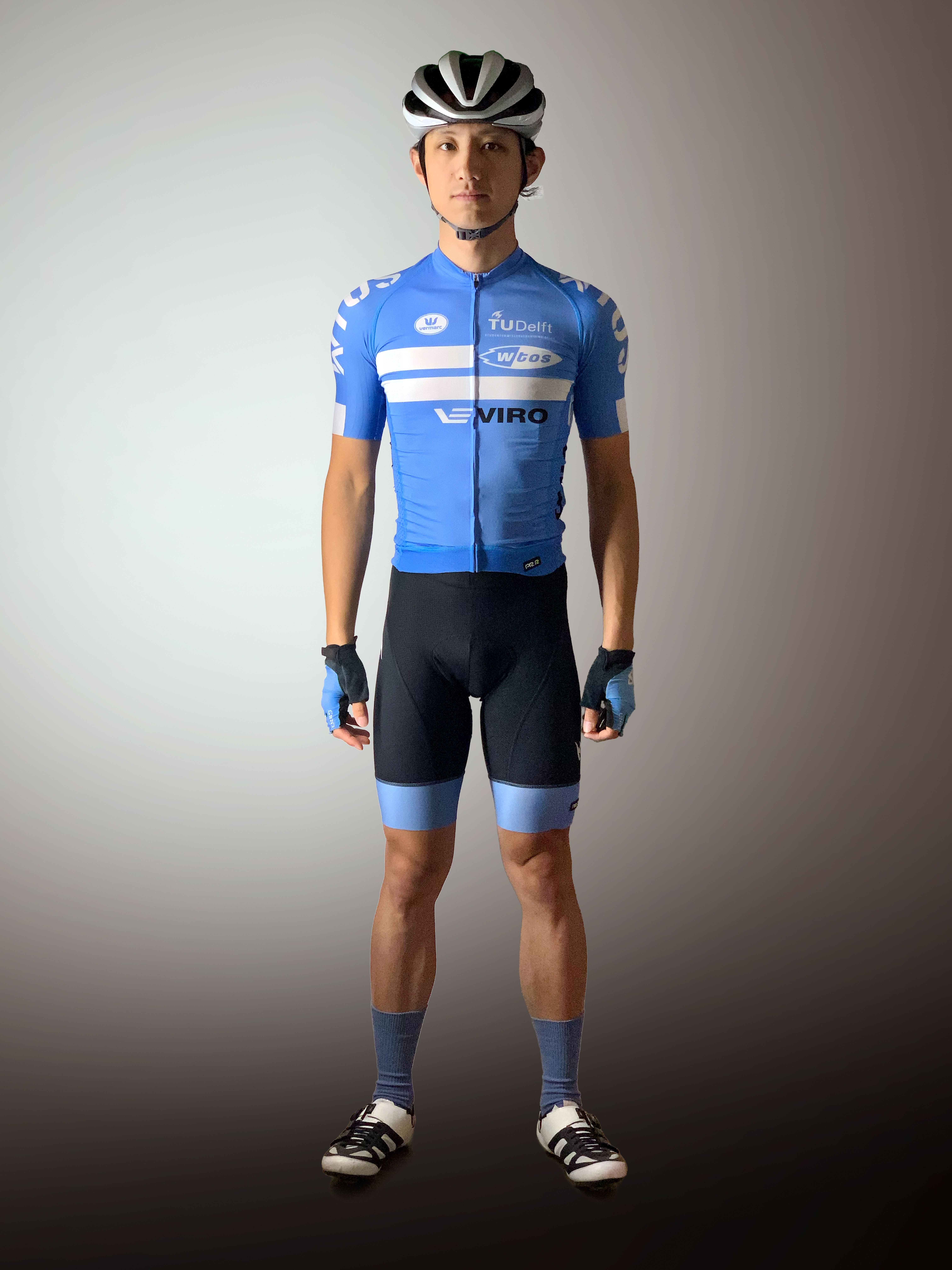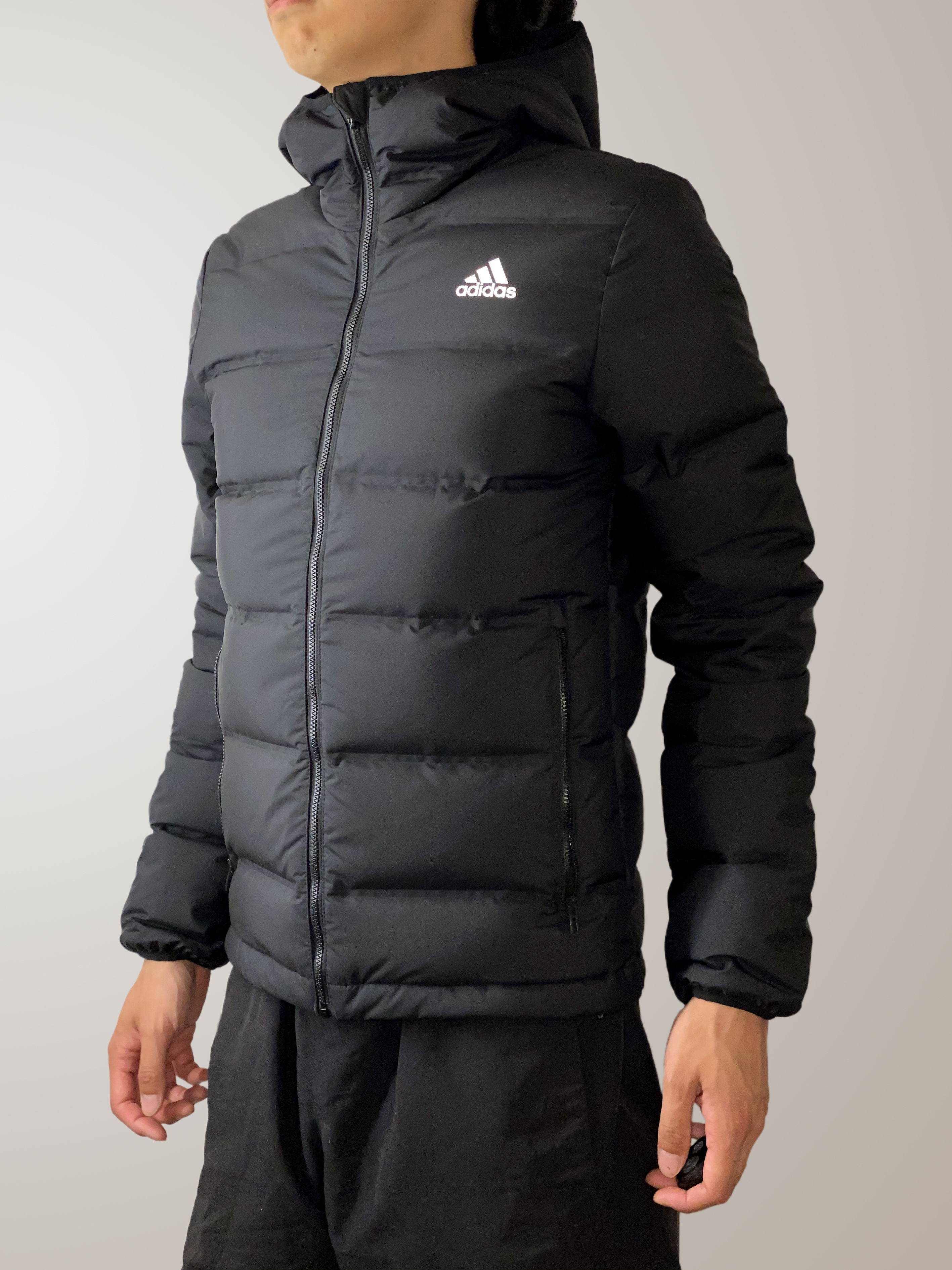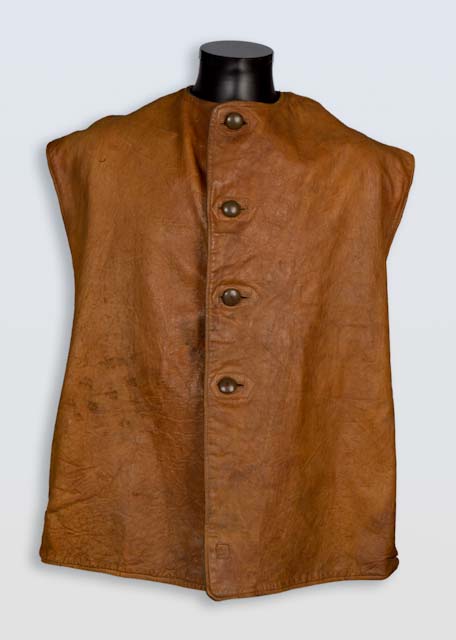|
Gilet
A gilet () or body warmer is a sleeveless jacket resembling a waistcoat or blouse. It may be waist- to knee-length and is typically straight-sided rather than fitted; however, historically, gilets were fitted and embroidered. In 19th-century dressmaking a gilet was a dress bodice shaped like a man's waistcoat.Oxford English Dictionary – Gilet entry Today, gilets are often worn as an outer layer, for extra warmth outdoors, or indoors on occasion. Fashion gilets may be made of cloth, fake fur, or knitted wool. Sports gilets are often windproof and/or made of fleece. High-end hiking jackets often have an integral gilet inside them, that can be zipped on and off and can be insulated with down. Racing cyclists use thin light gilets with a windproof front and mesh back. Shooting gilets are rugged and made of leather. Short, overwear gilets are called ''bodywarmers'' in the United Kingdom. Gallery Sportful_Gore-tex_Windstopper_cycling_gilet.jpg, A typical thin, non-insulated cycl ... [...More Info...] [...Related Items...] OR: [Wikipedia] [Google] [Baidu] |
Cycling Kit
In competitive cycling, the kit (or uniform) is the standard equipment and attire worn specifically by athletes participating in the sport. The outfits differ from other forms of cycling, such as commuting and recreational cycling due to the need for technical and performance materials and features to improve efficiency and comfort. The UCI specify the kit and the design the riders use. Cycling kits have evolved significantly since the early days of the sport when participants wore wool jerseys. Recent advances in manufacturing and technology have enabled lighter, more comfortable, colourful and complex designs to be made. Cycling kits nowadays are made primarily with synthetic materials, such as Lycra, which conforms to the body, thereby reducing drag by eliminating loose fabric as well as increase in comfort. Made-to-order custom kits with tailored cuts made to order are becoming increasingly common for individuals, clubs and teams to produce kits with custom designs. Notable b ... [...More Info...] [...Related Items...] OR: [Wikipedia] [Google] [Baidu] |
Jackets
A jacket is a garment for the upper body, usually extending below the hips. A jacket typically has sleeves, and fastens in the front or slightly on the side. A jacket is generally lighter, tighter-fitting, and less insulating than a coat, which is outerwear. Some jackets are fashionable, while others serve as protective clothing. Jackets without sleeves are vests. Etymology The word ''jacket'' comes from the French word ''jaquette''. The term comes from the Middle French noun ''jaquet'', which refers to a small or lightweight tunic. In Modern French, ''jaquette'' is synonymous with ''jacket''. Speakers of American English sometimes informally use the words ''jacket'' and ''coat'' interchangeably. The word is cognate with Spanish ''jaco'' and Italian ''giacca'' or ''giacchetta'', first recorded around 1350s. It is ultimately loaned from Arabic ''shakk (شكّ)'', which in turn loaned from Aramean/ Assyrian and Hebrew ''shaḳḳ (שַׁקּ)''. Nylon bomber jacket, also in ... [...More Info...] [...Related Items...] OR: [Wikipedia] [Google] [Baidu] |
Adidas Helionic Down Vest
Adidas AG (; stylized as adidas since 1949) is a German multinational corporation, founded and headquartered in Herzogenaurach, Bavaria, that designs and manufactures shoes, clothing and accessories. It is the largest sportswear manufacturer in Europe, and the second largest in the world, after Nike. It is the holding company for the Adidas Group, which consists 8.33% stake of the football club Bayern München, and Runtastic, an Austrian fitness technology company. Adidas's revenue for 2018 was listed at €21.915 billion. The company was started by Adolf Dassler in his mother's house; he was joined by his elder brother Rudolf in 1924 under the name ''Gebrüder Dassler Schuhfabrik'' ("Dassler Brothers Shoe Factory"). Dassler assisted in the development of spiked running shoes (spikes) for multiple athletic events. To enhance the quality of spiked athletic footwear, he transitioned from a previous model of heavy metal spikes to utilising canvas and rubber. Dassler persuaded ... [...More Info...] [...Related Items...] OR: [Wikipedia] [Google] [Baidu] |
British Country Clothing
British country clothing or English country clothing is the traditional attire worn by men and women in rural Britain; it is the choice of clothing when taking part in outdoor sports such as equestrian pursuits, shooting, fishing and during general outdoor activity, such as walking, on picnics, and gardening. It is also worn at events such as horse races, country weddings, beer festivals and country fairs. The form of dress although worn throughout Britain is mostly associated with England and is sometimes considered a historical form of dress or national costume, often worn to represent the English gentleman and lady. It is still considered countryside leisure wear and due to the durable, practical, comfortable and fashionable style, some people choose to use elements of country clothing for general usage in Britain. History During the 19th and early 20th centuries, what is regarded as traditional country clothing was a popular choice for wealthy people living in the British c ... [...More Info...] [...Related Items...] OR: [Wikipedia] [Google] [Baidu] |
Spanish Clothing
Spanish might refer to: * Items from or related to Spain: ** Spaniards are a nation and ethnic group indigenous to Spain **Spanish language, spoken in Spain and many Latin American countries **Spanish cuisine Other places * Spanish, Ontario, Canada * Spanish River (other), the name of several rivers * Spanish Town, Jamaica Other uses * John J. Spanish (1922–2019), American politician * "Spanish" (song), a single by Craig David, 2003 See also * * * Español (other) * Spain (other) * España (other) * Espanola (other) * Hispania, the Roman and Greek name for the Iberian Peninsula * Hispanic, the people, nations, and cultures that have a historical link to Spain * Hispanic (other) * Hispanism * Spain (other) * National and regional identity in Spain Both the perceived nationhood of Spain, and the perceived distinctions between different parts of its territory derive from historical, geographical, linguisti ... [...More Info...] [...Related Items...] OR: [Wikipedia] [Google] [Baidu] |
Yelek
A yelek (also spelled ''jelick'' in older English texts) is the bodice or waistcoat of Ottoman origin, traditionally worn by women. The ''yelek'' is typically a sleeveless and collarless garment and usually has small pockets on the sides. Traditional yeleks are generally embroidered and made out of silk cloth as well as velvet and leather. During the Ottoman era, the yelek was a hip-length jacket or vest worn for warmth by both sexes. It could have long sleeves, short sleeves, or no sleeves, and often had a small standing collar. A shorter variant, the ''anteri'' (or "anteree", ''anterija'') was also popular. In present-day Turkish, ''yelek'' is also the common word for a modern, usually sleeveless or short-sleeved vest, both for women and for men. See also *waistcoat *bodice *Ottoman clothing Ottoman clothing or Ottoman fashion is the style and design of clothing worn during the Ottoman Empire. Ottoman period While the Palace and its court dressed lavishly, the common pe ... [...More Info...] [...Related Items...] OR: [Wikipedia] [Google] [Baidu] |
Vest
A waistcoat ( UK and Commonwealth, or ; colloquially called a weskit), or vest ( US and Canada), is a sleeveless upper-body garment. It is usually worn over a dress shirt and necktie and below a coat as a part of most men's formal wear. It is also sported as the third piece in the traditional three-piece male suit. Any given waistcoat can be simple or ornate, or for leisure or luxury. Historically, the waistcoat can be worn either in the place of, or underneath, a larger coat, dependent upon the weather, wearer, and setting. Daytime formal wear and semi-formal wear commonly comprises a contrastingly coloured waistcoat, such as in buff or dove gray, still seen in morning dress and black lounge suit. For white tie and black tie, it is traditionally white and black, respectively. Name The term ''waistcoat'' is used in the United Kingdom and many Commonwealth countries. The term ''vest'' is used widely in the United States and Canada, and is often worn as part of ... [...More Info...] [...Related Items...] OR: [Wikipedia] [Google] [Baidu] |
Tabard
A tabard is a type of short coat that was commonly worn by men during the late Middle Ages and early modern period in Europe. Generally worn outdoors, the coat was either sleeveless or had short sleeves or shoulder pieces. In its more developed form it was open at the sides, and it could be worn with or without a belt. Though most were ordinary garments, often work clothes, tabards might be emblazoned on the front and back with a coat of arms (livery), and in this form they survive as the distinctive garment of officers of arms. In modern British usage, the term has been revived for what is known in American English as a cobbler apron: a lightweight open-sided upper overgarment, of similar design to its medieval and heraldic counterpart, worn in particular by workers in the catering, cleaning and healthcare industries as protective clothing, or outdoors by those requiring high-visibility clothing. Tabards may also be worn by percussionists in marching bands in order to prot ... [...More Info...] [...Related Items...] OR: [Wikipedia] [Google] [Baidu] |
Jerkin (garment)
A jerkin is a man's short close-fitting jacket, made usually of light-coloured leather, and often without sleeves, worn over the doublet in the 16th and 17th centuries. The term is also applied to a similar sleeveless garment worn by the British Army in the 20th century. A buff jerkin is an oiled oxhide jerkin, as worn by soldiers. The origin of the word is unknown. The Dutch word ''jurk'', a dress, often taken as the source, is modern, and represents neither the sound nor the sense of the English word. Sixteenth and seventeenth centuries Leather jerkins of the 16th century were often slashed and punched, both for decoration and to improve the fit. Jerkins were worn closed at the neck and hanging open over the ''peascod-bellied'' fashion of the doublet. At the turn of the 17th century, the fashion was to wear the jerkin buttoned at the waist and open above to reflect the fashionable narrow-waisted silhouette. By the mid-17th century, jerkins were high-waisted and long-s ... [...More Info...] [...Related Items...] OR: [Wikipedia] [Google] [Baidu] |
Primaloft
PrimaLoft® is a brand of patented synthetic microfiber thermal insulation material that was developed for the United States Army in the 1980s. PrimaLoft is a registered trademark of PrimaLoft, Inc., the brand's parent company. PrimaLoft synthetic insulation is used in outerwear, gloves, sleeping bags, and footwear. It is also used as a down alternative in pillows, comforters, and mattress toppers. In 2007, PrimaLoft introduced a product extension of yarn. The yarn is 100% polyester or a blend of 45% polyester fibers and 55% merino wool, and is used in socks, sweaters, base layers, and accessories intended mainly for outdoor wear. In 2010, PrimaLoft was the first maker of branded insulation to be recognized for compliance with the bluesign criteria for environmental effect. In 2015, PrimaLoft was the largest global supplier of bluesign approved insulation.There are several criteria that govern the use of the bluesign, which are designed to increase the productivi ... [...More Info...] [...Related Items...] OR: [Wikipedia] [Google] [Baidu] |
Waistcoat
A waistcoat ( UK and Commonwealth, or ; colloquially called a weskit), or vest ( US and Canada), is a sleeveless upper-body garment. It is usually worn over a dress shirt and necktie and below a coat as a part of most men's formal wear. It is also sported as the third piece in the traditional three-piece male suit. Any given waistcoat can be simple or ornate, or for leisure or luxury. Historically, the waistcoat can be worn either in the place of, or underneath, a larger coat, dependent upon the weather, wearer, and setting. Daytime formal wear and semi-formal wear commonly comprises a contrastingly coloured waistcoat, such as in buff or dove gray, still seen in morning dress and black lounge suit. For white tie and black tie, it is traditionally white and black, respectively. Name The term ''waistcoat'' is used in the United Kingdom and many Commonwealth countries. The term ''vest'' is used widely in the United States and Canada, and is often worn as part of ... [...More Info...] [...Related Items...] OR: [Wikipedia] [Google] [Baidu] |
Castelli (brand)
Castelli is an Italian brand of sports clothing and accessories based in Fonzaso in Veneto. Castelli is a company specializing in cycling and triathlon clothing. Castelli brand products are characterized by a logo representing a white scorpion inside a red circle. History Gianni Vittore's workshop In 1876, Gianni Vittore opened a shop in Milan where he made clothes by hand for businessmen, for the Milanese ballet troupe and football teams such as Milan and Juventus. Alfredo Binda, winner of the Giro d'Italia several times, was one of his customers. In 1935, Armando Castelli joined Gianni's staff, in the same year he decided to buy the company where he worked and to keep Gianni Vittore's clientele, including Gino Bartali and Fausto Coppi. Castelli brandname Castelli expanded the production by supplying various teams and in the following years even the great stars of cycling such as Louison Bobet, Rik Van Looy and Jacques Anquetil wore Castelli clothing. In 1948 Maurizio, Ar ... [...More Info...] [...Related Items...] OR: [Wikipedia] [Google] [Baidu] |








